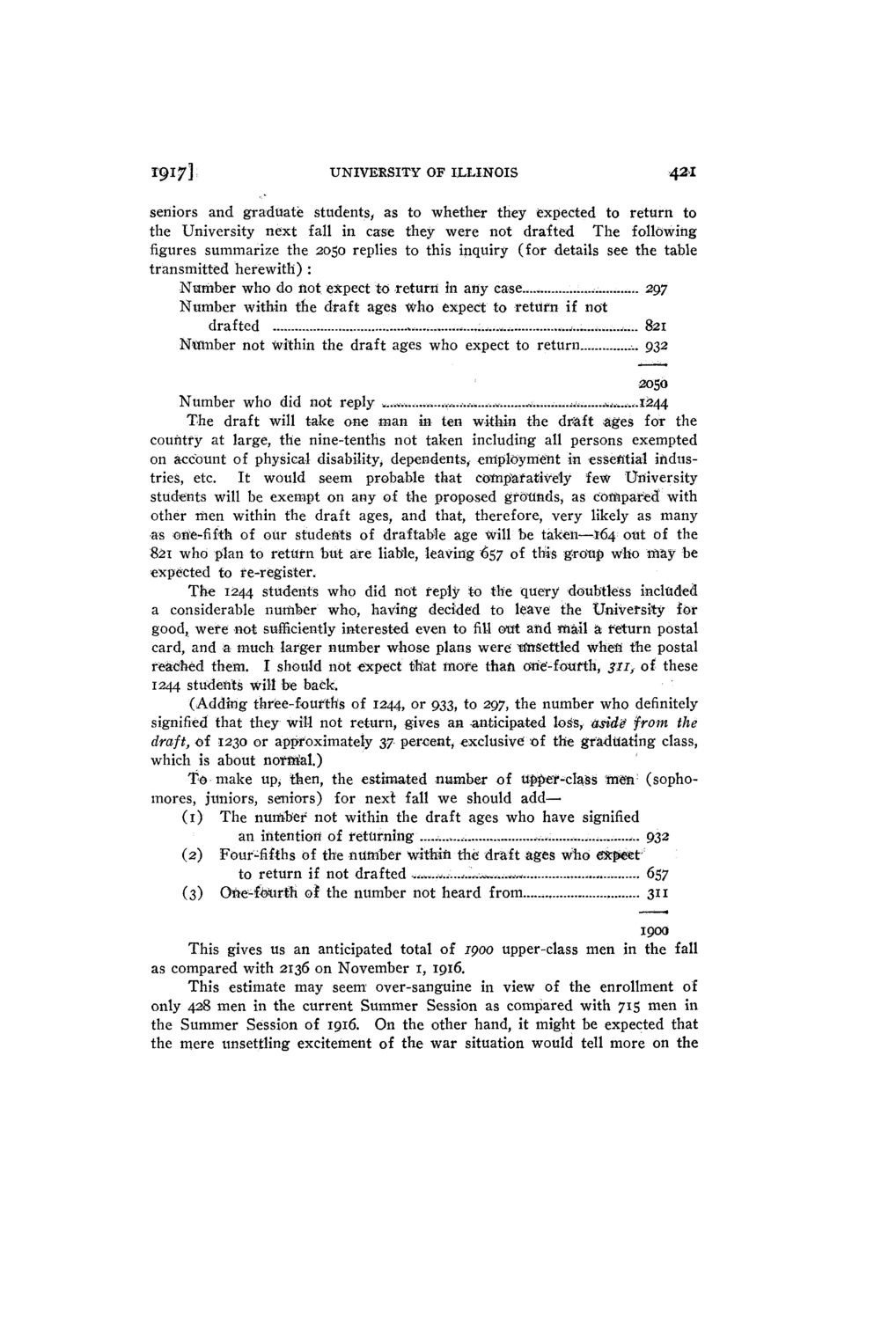| |
| |
Caption: Board of Trustees Minutes - 1918
This is a reduced-resolution page image for fast online browsing.

EXTRACTED TEXT FROM PAGE:
T91?] UNIVERSITY OF ILLINOIS 421 seniors and graduate students, as to whether they expected to return to the University next fall in case they were not drafted The following figures summarize the 2050 replies to this inquiry (for details see the table transmitted herewith) : Number who do not expect to return in any ease....... 297 Number within the draft ages who expect to return if not drafted ....•*.•....,.,. ...„......*.. ...,......_...,.... 821 Nutnber not within the draft ages who expect to return 932 2050 Number who did not reply ........,....,..,v,............v ..^.......,..^.,. ...=...,.,.1244 The draft will take one man in ten within the draft ages for the country at large, the nine-tenths not taken including all persons exempted on account of physical disability, dependents, employment in essential industries, etc. It would seem probable that comparatively few University students will be exempt on any of the proposed grounds, as compared! with other men within the draft ages, and that, therefore, very likely as many as one-fifth of our students of draftabfe age will be taken—-164 out of the 821 who plan to return but are liable, leaving 057 of this groun who may be expected to re-register. The 1244 students who did riot reply to the query doubtless included a considerable number who, having decided to leave the University for good, were not sufficiently interested even to fill out arid mail a return postal card, and a much larger number whose plans were liaisettled when the postal reached them. I should not expect that more than one"-fourth, jii,- of these 1244 students will be back. (Adding three-fourths of 1244, or 933, to 297, the number who definitely signified that they will not return, gives an anticipated loss, aside from the draft, of 1230 or approximately 37 percent, exclusivef of the graduating class, which is about normal.) To make up, then, the estimated number of ®$pe?-class Mefr (sophomores, juniors, seniors) for next fall we should add—• (1) The number not within the draft ages who have signified an iritentiori of returning ....^...,........... ................... 932 (2) Four-fifths of the number within the- draft ages who 6xfectr to return if not drafted *.........;.....~.^...^657 (3) Ofte-f&urth of the number not heard from , 311 1900 This gives us an anticipated total of 1900 upper-class men in the fall as compared with 2136 on November 1, 1916. This estimate may seem over-sanguine in view of the enrollment of only 428 men in the current Summer Session as compared with 715 men in the Summer Session of 1916. On the other hand, it might be expected that the mere unsettling exciteriient of the war situation would tell more on the
| |